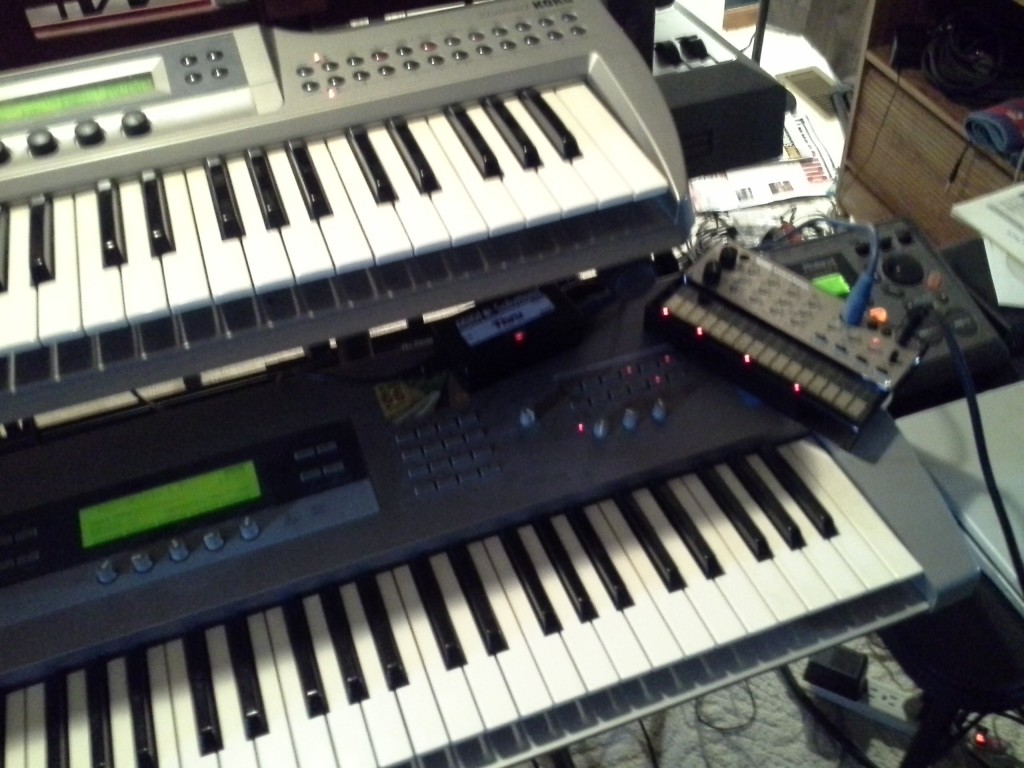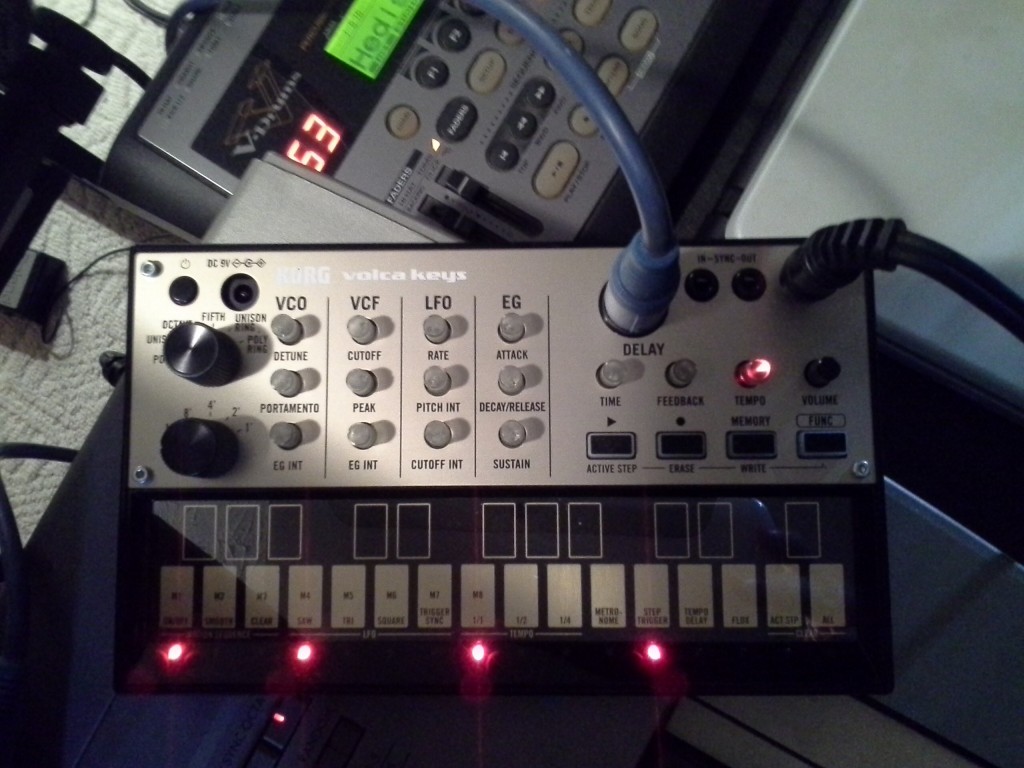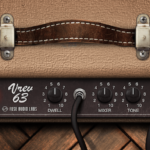While Korg’s Volca series of portable analog synth boxes intrigued me, I wasn’t really in the market for one. But with a Moog Sub 37 on seemingly perpetual pre-order (its ship date recently moved from mid-May to late-Summer) and two albums from Church of Hed and Quarkspace needing overdubs I began to reconsider. I hoped to use the new Moog extensively for these synth overdubs, and I couldn’t wait until the end of August or even later.
Enter the Korg Volca Keys. I figured I could MIDI it to my Korg Prophecy, creating a hybrid analog/VA synth to serve as the emergency understudy and get these albums finished.
Korg Volca Keys Features
- Classic Subtractive Synth Architecture in a Small Package
- 3 VCOs, 1 VCA, 1 VCF, 1 LFO, 1 EG
- Ring Modulator, Delay
- Syncs to Other Volcas and the Monotribe
- Loop Sequencer with 8 Memory Locations
- A Street Price of around $149
Needless to say, the Volca Keys fits perfectly in my live setup paired with its older uncle Prophecy. Its true analog sound cuts through a dense mix; letting me finish these tracks, while I wait for the Sub 37. The included loop sequencer is more feature-laden than the Korg Monotribe’s version, making me contemplate using the two synched together.
A Polyphonic Analog Synth in a Box for $150?
The bottom line is that a polyphonic analog synth in a small box for around $150 is a stunning achievement from Korg. The Volca Keys sounds great, and tweaking the filter’s cutoff and peak add some piercing bite to the proceedings. Three notes of polyphony are possible; the voice knob lets you switch between poly and unison settings, with octaves and fifths also possible.
A ring modulator is “hard-wired” to the voice knob as well. It adds a metallic sound to the poly and unison settings, using a square wave. Generally, the Volca Keys uses a hardwired sawtooth wave, with the ring mod being the exception.
A LFO and a simple envelope generator allow a measure of sound shaping and tweaking. A delay rounds out the Keys’ sonic architecture with time and feedback as the only controls. It sounds nice, but I would have preferred a level control to boost the delay’s output.
A Simple Loop Sequencer as well
The Volca Keys loop sequencer works in a similar manner as the version from the Monotribe, with the notable improvement of eight memory slots to save patterns. The Active Step feature supports odd time signatures, and Flux mode allows for loops free from quantization. The Motion Sequence capability provides for the automation of the Keys’ synth parameters within a loop.

A real Korg “Trinity” — the Z1, Prophecy, and Volca Keys hold court behind the Yamaha MM8 and Kawai K5000. Photo by Author.
I only spent a little time syncing the Volca Keys with the Monotribe, but intend on exploring that feature more closely in the future. If I discover any interesting insights, you’ll read about them here.
The Volca Keys is another “little synth box” winner from Korg. Sometimes I wonder if I should have gotten the Volca Bass which provides step note entry and three independent simultaneous patterns when using its sequencer. (Not to mention a big cutoff frequency knob on the VCF.) Still, it is a worthy purchase and serves well as a perfect introductory analog synthesizer for those curious about this alluring sector of music. Recommended.





[…] over both MIDI and a dedicated sync port would keep my Moog Sub 37 working in time with my Volcas and Monotribe. Thankfully, the PO-12 also provides a sync port, so it quickly joined in the […]